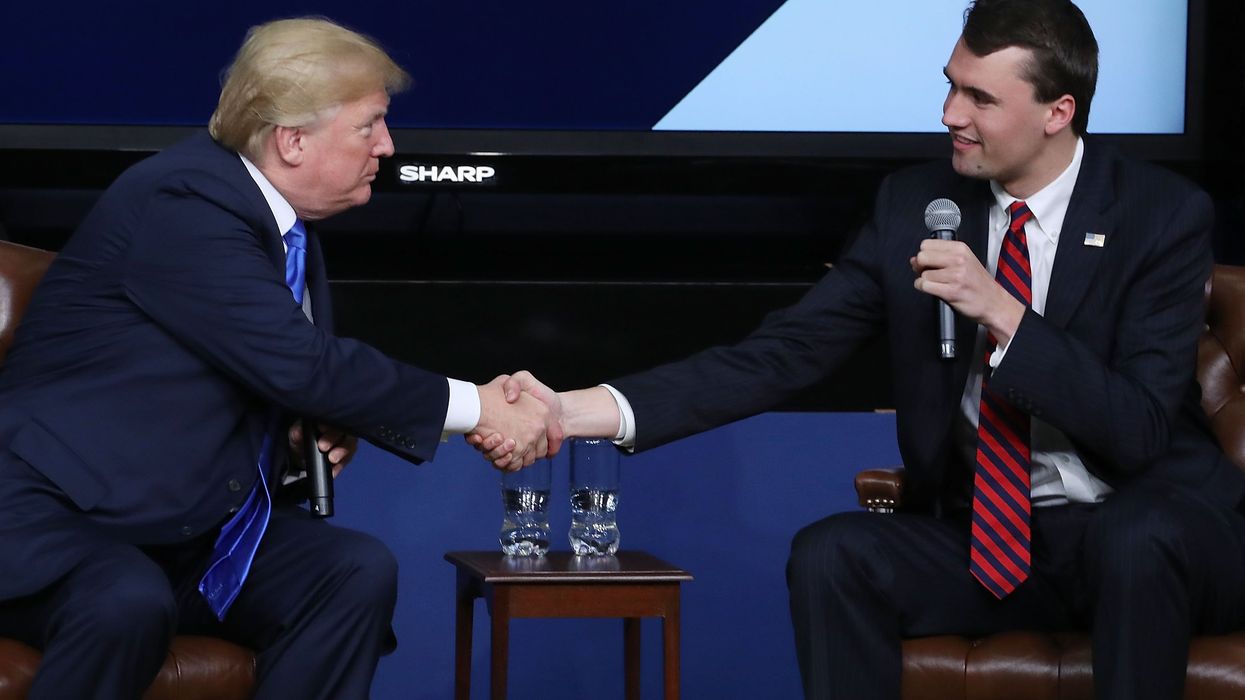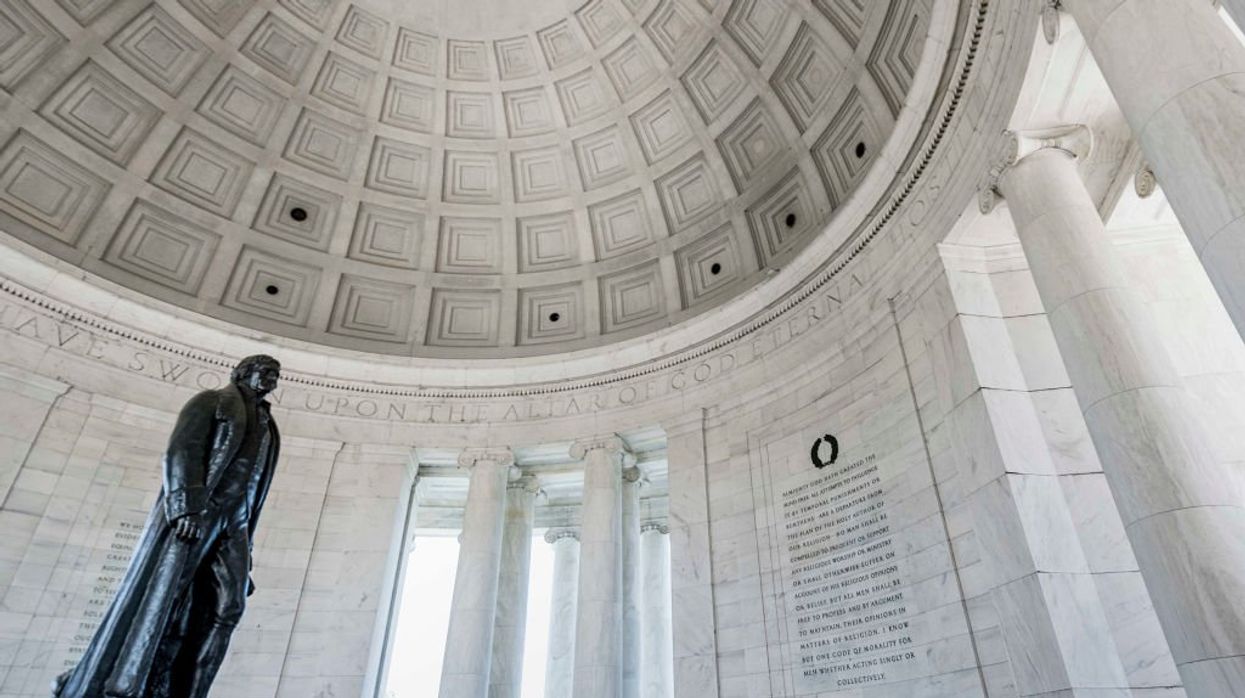Seemingly benign, a closer look at the new gun orders unveiled by the President yesterday reveals typical progressive agenda at play. These 23 orders don’t ban guns outright but they set a disturbing precedent going forward and lay the groundwork for future action.
"Now I didn't get a chance to watch the coverage last night on - what is it - the 23 executive orders," Glenn said this morning. "By the time I went on the air yesterday the reports from the media were it's not so bad."
"Have you read these things? This is a progressive time bomb," Glenn said.
What were some of the ones Glenn was most concerned with?
END THE FREEZE ON GUN VIOLENCE RESEARCH, INVESTIGATE THE CAUSES AND PREVENTION OF VIOLENCE, AND EXPLORE THE IMPACT OF VIOLENT MEDIA IMAGES AND VIDEO GAMES: For years, Congress has subjected the Centers for Disease Control (CDC) to restrictions ensuring it does not “advocate or promote gun control,” and some members of Congress have claimed this restriction prohibits the CDC from conducting any research on the causes of gun violence. However, public health research on gun violence is not advocacy. The President is directing the CDC and other research agencies to conduct research into the causes and prevention of gun violence, and the CDC is announcing that they will begin this research. The Administration is calling on Congress to provide $10 million for the CDC to conduct further research, including investigating the relationship between video games, media images, and violence.
"What do you think the CDC is going to say about guns?" Glenn said.
"It's a sick culture, and the problem lies in the home and parents maybe should pay attention to their kids," Pat said sarcastically. "You think that's what they're going to say?"
"No, I don't," Glenn said.
What else bothered Glenn?
Address unnecessary legal barriers that prevent states from reporting information about those prohibited from having guns: Some states have cited concerns about restrictions under the Health Insurance Portability and Accountability Act as a reason not to share relevant information on people prohibited from gun ownership for mental health reasons. The Administration will begin the regulatory process to remove any needless barriers, starting by gathering information about the scope and extent of the problem.
"Well, now the government can go around HIPAA. What does HIPAA do? HIPPAA prevents you from seeing your children's information. That's all it does. Because now the government can see it. You just can't. So anything that the doctor says about your kids - you can't get any of the information on your kids because they're proteced under HIPAA. So all of the protection is not on the side of the consumer, the protection is to make sure that you don't have access to anybody. But the government has access to everybody's. No thank you.
"He also has deputized all of our doctors, and now that the doctors have to decide 'Should this person be carrying a gun?' The doctors have to decide. The doctors have to report. If my doctor asks me 'Do you have any guns?' I'm going to say 'Go to hell.' 'Well, I have to ask this' 'Well I'm going to answer: I moved to Texas. I'm proud to be a Texan. Maybe you should grow a set. Are you Texan? Are you a stooge? Are you a doctor or are you a policeman? What are you?'"
"The doctor situation has got to be redesigned. They have so screwed up our healthcare system, and nobody knows it yet. There's no way -- I know a lot of doctors they're not going to do that. And what will happen they'll go under more and more and more pressure. They have to do it or they'll be violating the law," Glenn said. "What does that mean? So now your doctor becomes a policeman. What does that mean for your healthcare? You going to have open conversations with your doctor anymore? You can't trust your doctor because there's no HIPAA with your doctor. No thank you."
As Stu pointed out, this is progressive foundation building. While these executive orders weren't a grab for the guns right now, it sets up a scenario that when the next tragedy happens they have all the studies to show how dangerous it is to have guns.
Glenn said, "This is the way that the progressives do it. Make no mistake that what the President did was stomp all over your Second Amendment rights. He has stomped allover or private conversations with your doctors. He has made the situation in this country much worse because if there was anybody who had some sort of psychiatric problem that that had access to guns they are certainly not going to go to doctor or not being taken to the doctor until the very last minute."
"How much more trouble is this country country in? How much more danger are our children in because of what he did yesterday? I contend a lot. I contend a lot," Glenn said.
The Wall Street Journal provided a summary of the 23 Executive Orders:
1. Issue a Presidential Memorandum to require federal agencies to make relevant data available to the federal background check system.2. Address unnecessary legal barriers, particularly relating to the Health Insurance Portability and Accountability Act, that may prevent states from making information available to the background check system.
3. Improve incentives for states to share information with the background check system.
4. Direct the Attorney General to review categories of individuals prohibited from having a gun to make sure dangerous people are not slipping through the cracks.
5. Propose rulemaking to give law enforcement the ability to run a full background check on an individual before returning a seized gun.
6. Publish a letter from ATF to federally licensed gun dealers providing guidance on how to run background checks for private sellers.
7. Launch a national safe and responsible gun ownership campaign.
8. Review safety standards for gun locks and gun safes (Consumer Product Safety Commission).
9. Issue a Presidential Memorandum to require federal law enforcement to trace guns recovered in criminal investigations.
10. Release a DOJ report analyzing information on lost and stolen guns and make it widely available to law enforcement.
11. Nominate an ATF director.
12. Provide law enforcement, first responders, and school officials with proper training for active shooter situations.
13. Maximize enforcement efforts to prevent gun violence and prosecute gun crime.
14. Issue a Presidential Memorandum directing the Centers for Disease Control to research the causes and prevention of gun violence.
15. Direct the Attorney General to issue a report on the availability and most effective use of new gun safety technologies and challenge the private sector to develop innovative technologies.
16. Clarify that the Affordable Care Act does not prohibit doctors asking their patients about guns in their homes.
17. Release a letter to health-care providers clarifying that no federal law prohibits them from reporting threats of violence to law-enforcement authorities.
18. Provide incentives for schools to hire school resource officers.
19. Develop model emergency-response plans for schools, houses of worship and institutions of higher education.
20. Release a letter to state health officials clarifying the scope of mental-health services that Medicaid plans must cover.
21. Finalize regulations clarifying essential health benefits and parity requirements within ACA exchanges.
22. Commit to finalizing mental-health-parity regulations.
23. Launch a national dialogue led by Secretaries Sebelius and Duncan on mental health.

 Mark Wilson / Staff | Getty Images
Mark Wilson / Staff | Getty Images
 John Greim / Contributor | Getty Images
John Greim / Contributor | Getty Images